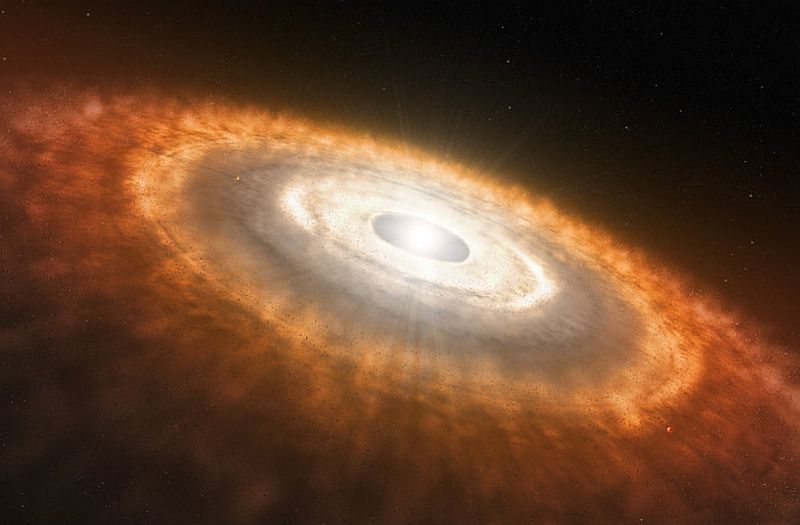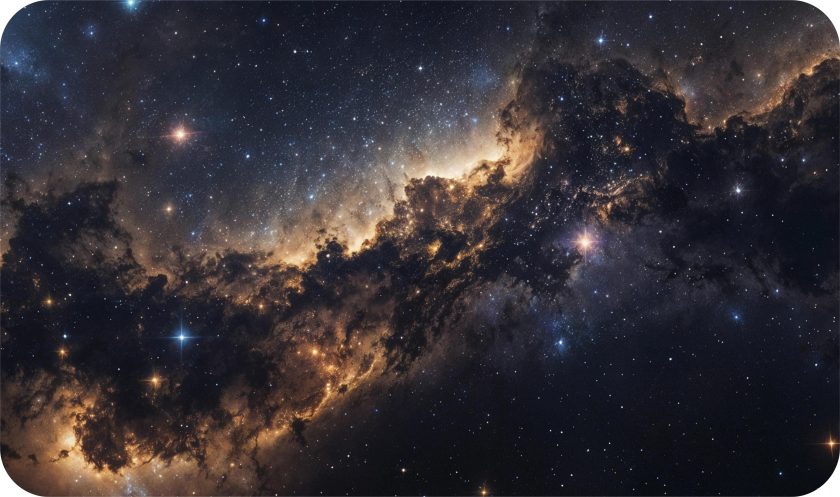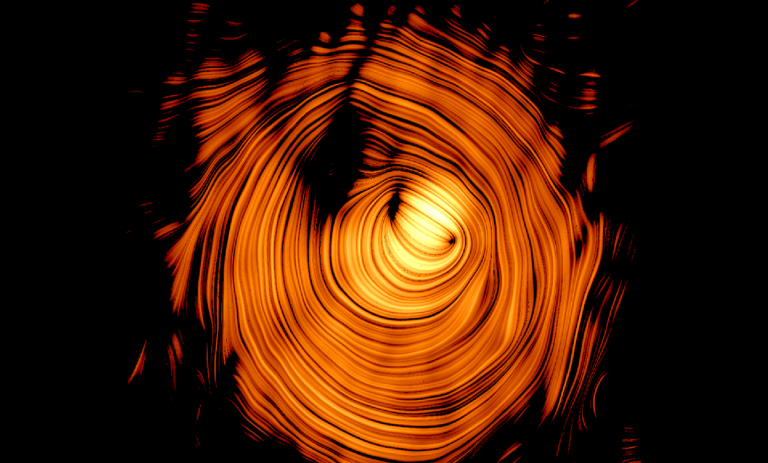
Astronomers led by Kamber Schwarz (MPIA in Heidelberg) have successfully deduced the mass of a potential “planet factory”, the protoplanetary disk around the star GM Aurigae. With the help of radio data from the ALMA observatory and physical modelling, the astronomers were able to track the GM Aurigae system.
The classical T Tauri star is between 2 and 10 million years old and is encircled by a large circumstellar dust disk. Entire GM Aurigae’s paraphernalia is around 500 light-years away from us, which in astronomy counts as our closest galactic neighbourhood.
From the simulation, the team determined that the temperature and other conditions are just right to form a gas planet.
Over the past years with the advancement of technological equipment astronomers are able to track the dust clouds around young stars in finer details. But the time when the dust clouds begin to move inwards to form planets has always been a difficult task. This time, Schwarz and her team were able to make a successful attempt.
Massive disk around GM Aurigae
Astronomers combined the data of the young star – GM Aurigae – from ALMA observatory and ESA’s Herschel Space Observatory. And they concluded that there is evidence of the dust cloud being collapsing inwards to form a gas planet.
Schwarz and her team’s research is part of a bigger project, which is MAPS, “Molecules with ALMA at Planet-forming Scales”. Aim of MAPS is to observe the pattern of molecule distribution in areas where exoplanets assemble.
ALMA observatory operates at millimeter and submillimeter wavelengths, therefore, it not only helps in identifying molecules but also tracking finer structures within disk that is formed by those molecular arrangement. This is the most crucial part for Schwarz’s sub-project.
Most important parameter that determines the stability of protoplanetary mass and the likelihood of forming planet, is the disk’s mass. Major percentage of this mass is hydrogen molecules, H2. But H2 cannot be identified so easily because at low temperatures of protoplanetary gas and dust, it emits almost no radiation at all.
Hydrogen deuteride, the tracer molecule
In such scenarios, astronomers look for “tracer molecules”. These molecules shed radiation and in most of the cases, prefer to stay close with molecular hydrogen. Once these molecules are observed, the presence and amount of molecular hydrogen can be estimated.
Hydrogen deuteride, HD, is a useful tracer when protoplanetary disk is under observation. HD is a diatomic compound of two isotopes of hydrogen:
- one, ordinary hydrogen atom with a single proton in its nucleus, and
- two, a heavy hydrogen atom – Deuterium with a proton and a neutron as its nucleus.
Since, HD is chemically identical to H2, therefore, in protoplanetary disk the ratio between abundances of the two are always about the same. ESA’s Herschel Space Observatory, has observed the characteristic HD radiation in disk encircling GM Aurigae.

Spectral lines
Radiation, however, depends on two factors,
- the amount of HD present, and,
- temperature
To estimate the mass of H2 in the disk from the amount of HD, Schwarz and her team simulated temperature variations across the disk. This is where MAPS came in, with its thorough survey of many molecular lines.
Both atoms and molecules give out distinct radiation – during excitation or collisions with other molecules – in numerous different wavelengths called “spectral lines”. For molecules, these emission lines are in the infrared or submillimeter/millimeter region of the electromagnetic spectrum.
Molecules with ALMA at Planet-forming Scales (MAPS) targets these submillimeter/millimeter wavelength molecular lines.
With the rise of temperature, the main radiation output shifts to different frequencies. For instance, energy coming out from the radiation of carbon monoxide (CO) molecules decreases with temperature. Which, therefore, acts as a natural “cosmic thermometer”.
Planet in the making
Schwarz and her team assimilated all the data together. Their reference point was the physical model that simulated not only the distribution of gas and dust but also temperature variations. They kept playing with the model parameters until they reach CO distribution and temperature distribution to construct a “cosmic thermometer”.
Finally, they were able to create a protoplanetary disk with the “best mass estimate” (0.2 solar masses’ worth of material) and the “best cold temperature” (20 degrees Celsius above absolute zero).
Also, with the help of stability or instability of specific regions parameter, they were able to reach a point where the disk regions were stable, and not in danger of collapsing. That region is visible in observations that show emissions from dust as a bright ring.
The presence of huge amount of dust is expected since it protects the region from the star’s radiation which in turn produces lower temperatures that help along with gravitational collapse. Eventually, planet formation might well have already started.
Takeaway
Kamber Schwarz’s research on planet formation looks promising and exciting.
The team, however, does not stop here, they plan to investigate the nature of the potentially unstable region by using another part of the MAPS data. For instance, specific properties of the spectral lines so that they can reconstruct the significant motion of the gas in different regions of the disk.
Via: Space Daily



